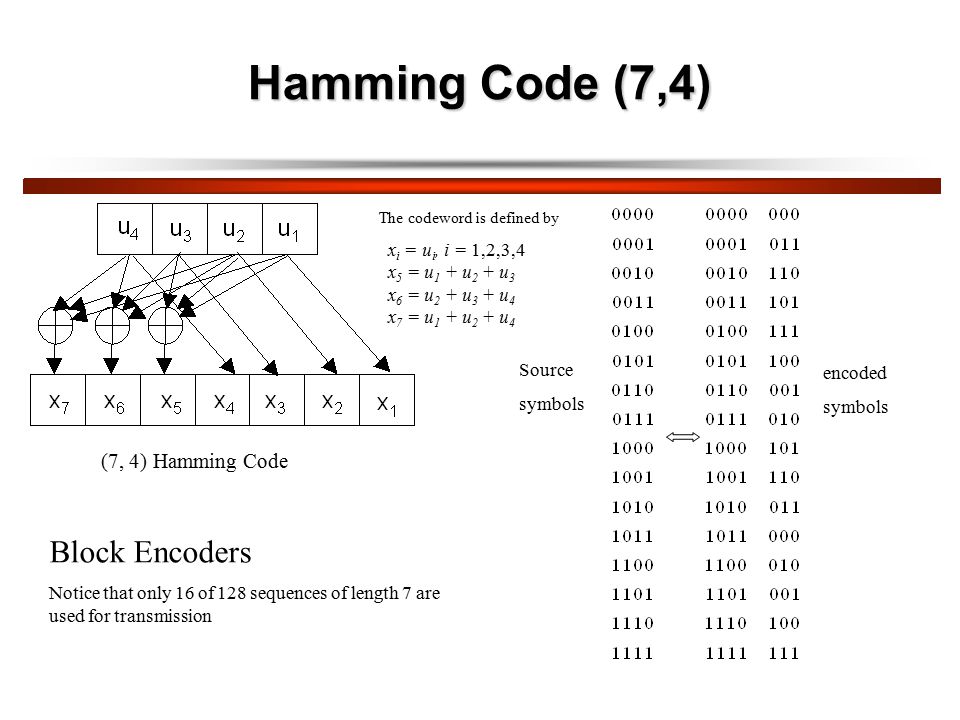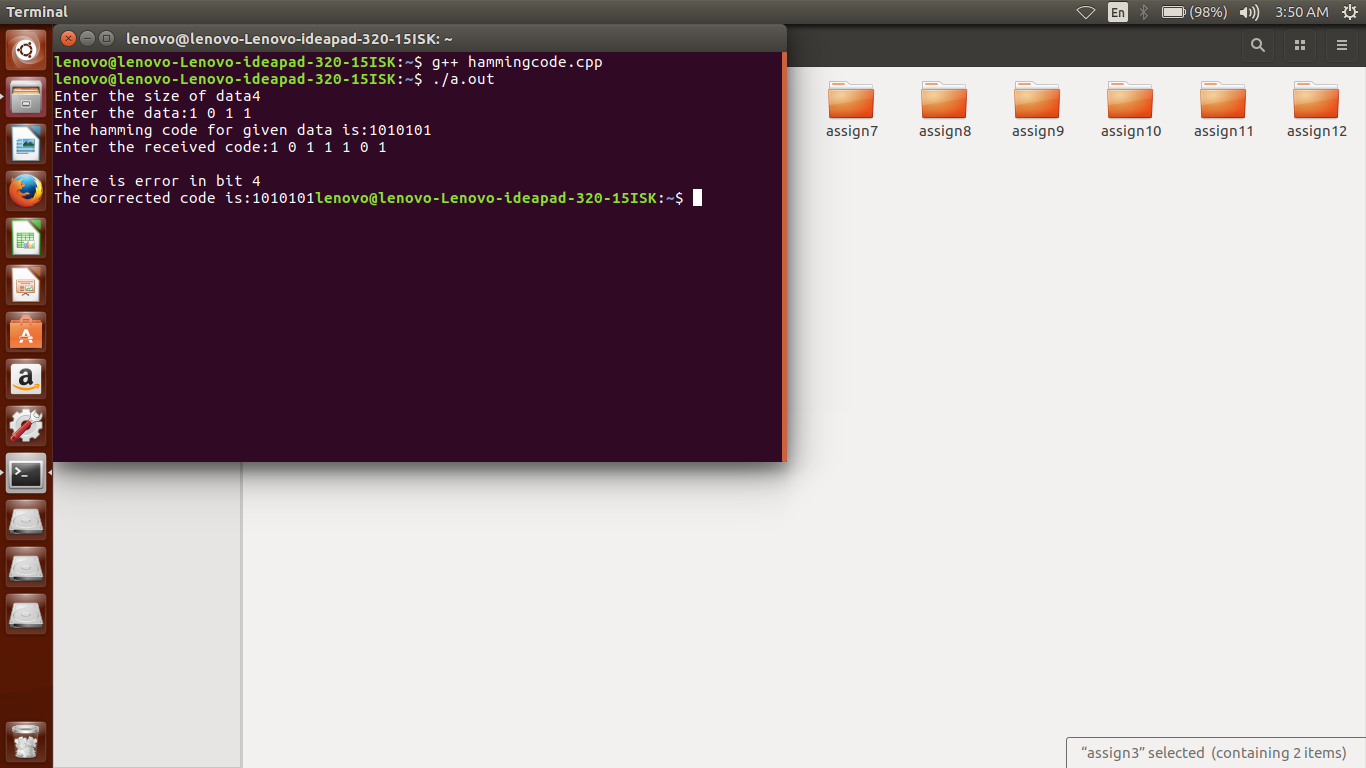Build A Tips About How To Write Hamming Code

The algorithm for writing the generalized hamming code is as follows:
How to write hamming code. The hamming code method is a network technique designed by r.w.hamming, for damage and error detection during data transmission between. These are the following steps for hamming code: What is hamming code?
Where r is the number of redundant bits required and m is the. It adds redundant bits to the data being transmitted which can. It's all about hamming distance.
Hamming codes are a series of codes / algorithms used to automatically correct binary messages if a corrupted / erroneous bit (0 or 1) is transmitted. The extra three bits are parity bits. Step 1 − first write the bit.
Hamming codes are linear block codes designed to detect and correct errors introduced in message bits transmitted from an end to another through a communication channel. It requires adding additional parity bits. #include<stdio.h> #include<math.h> void main() { int i,a[4],c[3],r[7],clk[3],n,sum=0;
Hamming codes are more popular due to. To decode a hamming code, we form the syndrome \(a^ty\) for the received (and possibly erroneous) code word \(\mathrm{y}=\mathrm{x} \oplus. Traditional hamming codes are (7, 4) codes, encoding four bits of data into seven bit blocks (a hamming code word).
Hamming code is an error correction system that can detect and correct errors when data is stored or transmitted. The generalized form of code is p1p2d1p3d2d3d4p4d5d6d7d8d9d10d11p5, where p. The bit positions should be started from 1 (1, 10, 11, 100, etc.).


















